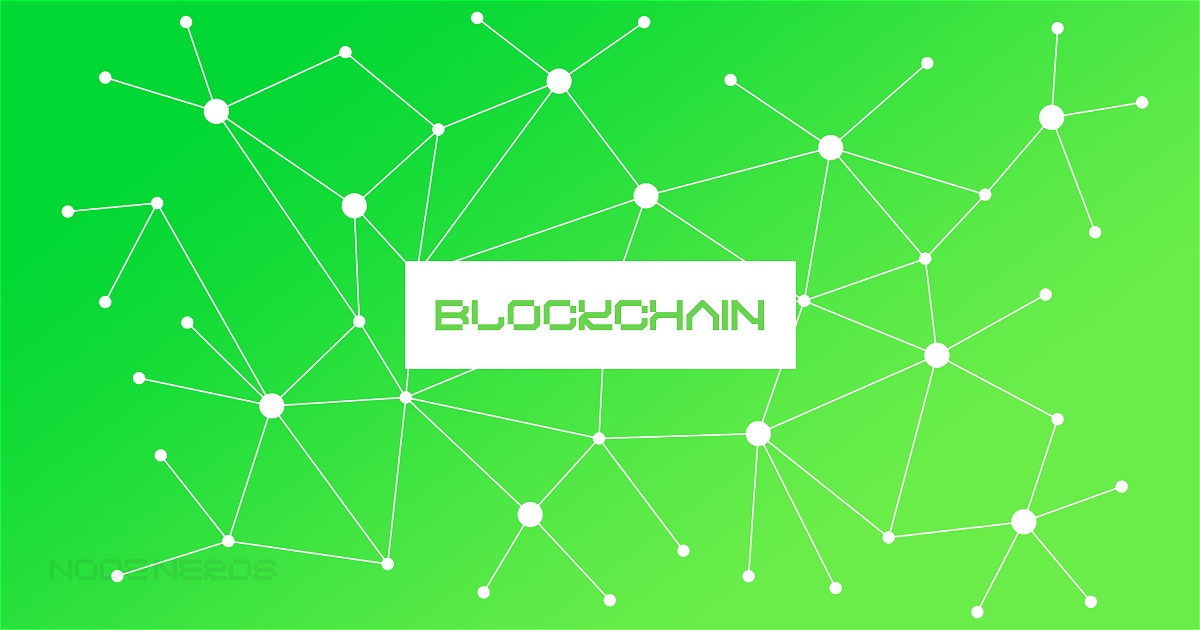
What Is A Blockchain Node
A blockchain node is a fundamental component of any decentralized network, responsible for running the protocol software that ensures the network's properly functioning. Nodes are essentially the backbone of blockchain infrastructure, enabling the distributed and trustless nature of blockchain technology. They perform crucial functions like maintaining a public ledgers, validating transactions, and ensuring network consensus.
Types of Blockchain Nodes

Full Nodes: These nodes are a type of node that store the entire history of the blockchain and validate new transactions. They ensure the security and transparency of the network by continuously verifying the blockchain’s integrity. Full nodes are crucial for decentralization, as they maintain a copy of the entire blockchain.
Light Nodes: Light nodes, also known as lightweight nodes, do not store the entire blockchain. Instead, they only retain essential information, relying on full nodes for access to the full transaction history. These nodes are typically used in crypto wallets for simpler operations like transactions.
Masternodes: Masternodes are full nodes that validate and store transactions but do not add new blocks to the blockchain. They are often used in proof-of-stake (PoS) systems and receive rewards for their role in maintaining the network.
Mining Nodes: Mining nodes use computational power to solve complex mathematical problems in a proof-of-work (PoW) system like Bitcoin. They verify transactions, create new blocks, and earn rewards for their efforts. Mining nodes are critical for adding new blocks to the blockchain and securing the network.
Staking Nodes: In proof-of-stake (PoS) networks, staking nodes lock up a certain amount of cryptocurrency as collateral to validate transactions and secure the network. Staking nodes are selected based on the amount of cryptocurrency they "stake".
Lightning Nodes: These nodes facilitate off-chain transactions in networks like Bitcoin, helping to reduce congestion and enable faster, lower-cost transactions by processing exchanges outside the main blockchain and later adding them back.
Super Nodes: Rare and highly specialized, super nodes perform unique tasks such as implementing protocol changes or handling network-wide updates or network tasks.
How Does a Blockchain Node Work
Within the world of crypto, blockchain nodes play two main roles: broadcasting and validating transactions. When a user submits a transaction, a node receives and broadcasts it across the network. Each node verifies the transaction to ensure the sender has sufficient funds and authorization.
- A transaction is requested
- A block that represents the transaction is created
- The block is sent to every node on the network
- Nodes validate the transaction
- Nodes receive a reward for the proof of work
- A block is added to the existing blockchain
- The transaction is complete
This process secures the network, as a fraudulent transaction could only succeed if 51% of the nodes approve it, which is highly unlikely in large networks due to the authentication process. After validation, transactions are grouped into blocks, and full nodes enforce the consensus mechanism to add new blocks to the blockchain. This process ensures the integrity and security of the blockchain system.
What do Blockchain Nodes Do

Think about going to the local bank to send a wire transfer, withdraw money, or do anything. All of this takes place from a centralized unit that has control of your data, your money, and your processing power. We saw this with names like Robinhood back during the Gamestop days, having complete control over your ability to buy, sell, and trade. The central point can shut down anything and everything leaving the user completely powerless.
Blockchain nodes decentralize everything meaning they don't require a central authority to process transactions. The blockchain nodes validate transactions and keep the entire blockchain ledger running smoothly. Without nodes, there would be chaos for lack of a better term. Congested blockchain networks and zero security would make the very thing you are interacting with unfit to do its sole job.
How can I run a Blockchain Node?

If you want to run a blockchain node it typically involves setting up the necessary hardware, which includes ample storage, memory, and bandwidth to handle the network’s demands. You’d need to download the blockchain’s specific protocol software, such as Bitcoin Core for Bitcoin or Geth for Ethereum. Once installed, your device will act as a node, validating transactions and maintaining the ledger. You also need to ensure the system can stay online for long periods to stay in sync with the network.
There are also service providers who can assist with running nodes. For example, NodeOps is a platform focused on simplifying blockchain node deployment and management. Their main goal is to make it easier for developers and operators to set up and run nodes on various blockchain networks without needing advanced technical expertise or extensive hardware setups.
One of NodeOps' key features is its one-click deployment system, which allows users to launch and manage nodes with minimal effort. This solution has proven particularly helpful for those building decentralized applications (dApps) or participating in decentralized finance (DeFi). They offer a range of tools and services to help operators streamline node deployment, such as monitoring tools, vulnerability trackers, and NodePad™, which simplifies node management across multiple blockchain ecosystemsNodeOps supports several major blockchains, including EigenLayer and Cosmos Hub, and has already deployed over 25,000 nodes across 35+ blockchains. This makes them an attractive choice for developers and organizations that want to focus on building and scaling their applications without getting bogged down by the technical challenges of node operations.
What is the difference between Miner Nodes and regular Nodes?

Miner nodes are special nodes that not only verify transactions but also compete to create new blocks in the blockchain. They solve complex mathematical problems (called proof-of-work) to add these blocks and are rewarded with cryptocurrency. Miner nodes are essential for blockchains like Bitcoin, where creating new blocks is how the network stays secure and grows.
"Regular" nodes, often called full nodes, don’t create new blocks. Their job is to validate and store the entire blockchain data. They ensure that all transactions follow the rules but don’t earn rewards like miner nodes. They help maintain the network by making sure everyone has the same copy of the blockchain ledger.
What rewards do Node operators receive?
Node operators receive rewards depending on the type of node being run and the rewards that have been assigned to that specific node. For example, running a Hychain Node gives you rewards via their native currency $TOPIA. Running a CARV node gives you rewards for their future token $CARV and running a Nexus Nodes will give you $RCADE tokens. All of these give different rewards based on the tokenomics and chain activity.
Why Should I Own a Node?
Owning a blockchain node is like holding the keys to the kingdom! You're not just a participant, you're a guardian of the network, ensuring its security, transparency, independence and much more. Imagine directly influencing how transactions are verified and data is stored. You're at the forefront of decentralization. Plus, it’s not just about the power – it’s about the rewards which if done correctly can have lasting effects on node operators. Whether through staking or mining, owning a node can provide passive income while contributing to the blockchain’s stability. In a world of middlemen, having a node makes you the ultimate end game player.
If you believe in the blockchain network you should own a node. If you believe in a particular project with more conviction then maybe you should think about owning and running one of their nodes. As discussed approved nodes that are released by teams help secure their blockchain transactions and even given nice benefits on the backend.
It is easy to over-complicate this process of owning a node. With multiple nodes being available from light node to full node to other nodes, how the heck do I decide what nodes to own & operate? Well in short finding the right project and letting the nodes work is the "Golden Ticket".
Imagine you have a big book where everyone writes down the rules of a fun game, and all your friends need to follow those rules to play fairly. Now, if you own a node, it’s like you're holding one of those important books and helping everyone make sure the game is fair and running smoothly. This includes but is not limited to:
- Storage space
- Network Transactions
- Essential Data
- Peer-to-Peer Network
- Blockchain Transactions
- Validate Transactions
- Transaction Data
- Network Congestion
- Network's Security
- Much More
Nodes are Remarkable
Owning and operating nodes might be the least sexy story you have ever heard about in the Crypto space. However, if you look at legends like Warren Buffett and others they will tell you it is all about building a Moat or a defense. Nodes allow for just this and also reward you for all the hard work you do. Whether you are running a miner node collecting the rewards from mathematical problems being solved or running a staking node that is validating transactions, you are being rewarded.
The true fun starts when some of these L2 chains can start to scale real users. As it stands right now the Blockchain space is still small. Nobody has even heard of different types of nodes let alone master nodes, archival nodes, or the other node variations.
The Meat & Potatoes as I like to talk about is all about two things: scale and distribution.
Once a team or project can achieve this scale which we are talking more than 10M+ players or users then it all comes down to distribution. How can you get the power in the hands of the people. This is when nodes in blockchain become sexy. However, at the moment the overall landscape is not large enough to make them attractive. For example:
- 10-20 million people own an NFT
- 2.3 million Web3 gamers
- 20-30% actively spend money
- 1,000 Web3 games (most with 10K collections)
- 460 active players per game on average
Yes, you read that correctly. There are on average 460 daily active players (likely less for smaller games) and more on bigger games - but that means the market has huge potential to grow rapidly and 10,000x. The harsh reality is that the primary function of all the nodes in operation only become attractive when recent blockchain transactions start to scale. At scale would mean 100's of Millions of users transacting, sending, receiving and using the entire network without batting an eye. Until then find your favorites and position yourself accordingly!

